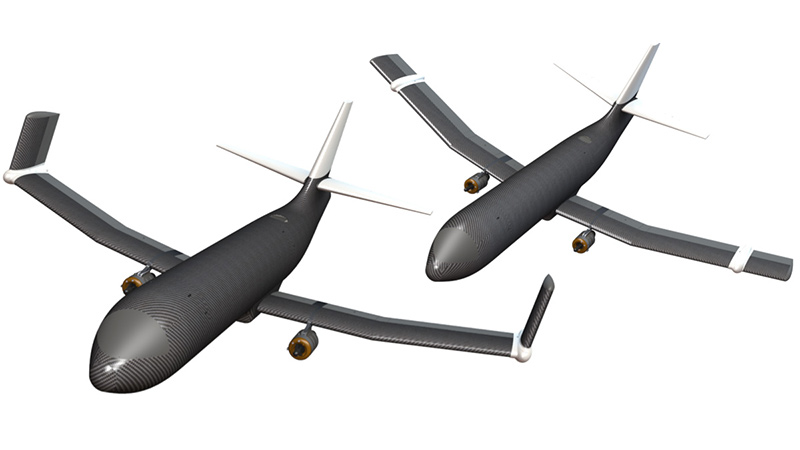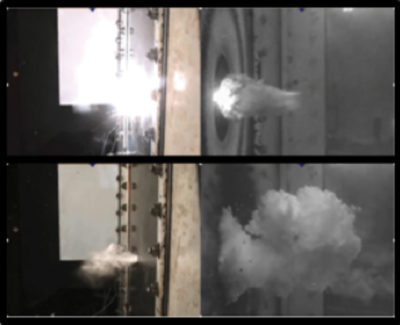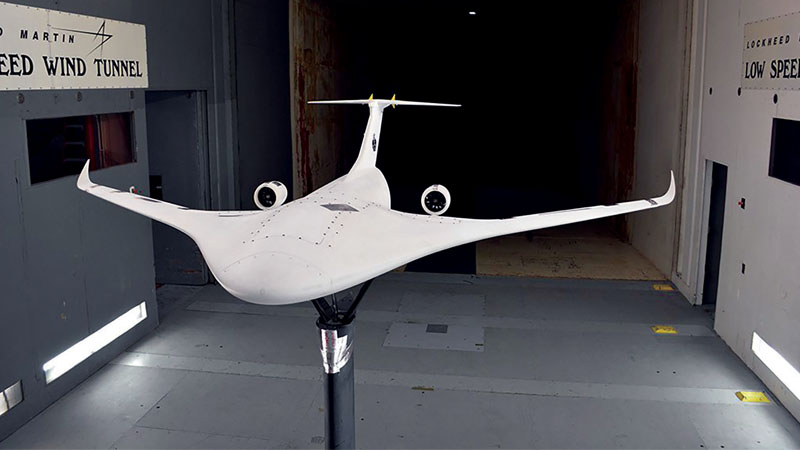Testing a variety of adaptive structures
By Darren J. Hartl|December 2017
The Adaptive Structures Technical Committee supports work to enable aircraft to adapt to changing environmental conditions during flight.
NASA’s Transformative Aeronautics Concepts Program in April chose Texas A&M University to lead an effort to explore adaptive airframe concepts based on shape-memory alloy, or SMA, actuators for reducing sonic boom noise levels across changing flight conditions. The work is part of NASA’s University Leadership Initiative. At the same time, a second team that includes the University of Tennessee, Texas A&M, Rutgers University and others was chosen to demonstrate the viability of ultra-efficient wing design based on such adaptive structures concepts as slotted airfoils and active trailing edges driven by piezocomposite smart material actuators, developed at Rutgers over the past year. Boeing is a primary industrial partner on both of these University Leadership Initiative efforts.
Morphing aircraft remained one of the most active topics this year. NASA’s Armstrong Flight Research Center in California and the Air Force Research Laboratory in Ohio partnered throughout 2017 to perform a series of flight tests at Armstrong on an Adaptive Compliant Trailing Edge to investigate flexible trailing-edge wing flaps as a means to improve aerodynamic efficiency and reduce noise. The experiments collected flight data regarding integration and reliability of the new compliant flaps manufactured by FlexSys.
Armstrong also teamed with Boeing throughout 2017 to investigate in-flight wing folding for aircraft fuel cost reduction. The Spanwise Adaptive Wing project this year completed vehicle ground-testing on Area-I’s PTERA, a subscale, unmanned aircraft shaped like a Boeing 737. SMA actuators in a compact folding mechanism accommodated within the wing outer mold line promise to save weight and greatly reduce complexity relative to alternatives. Next, flight tests will be performed with PTERA in which the folded wing tips will provide 40-50 percent of the yaw control currently provided by the rudder. Wing morphing was also addressed in 2017 at TU Delft, where continuous camber and twist induced along wing trailing edges are being explored in prototypes with novel mechanisms that reduce actuation energy and wing skin strain.
Researchers at AFRL at Wright-Patterson Air Force Base in Ohio demonstrated several adaptive structures and multifunctional materials concepts this year. The Aerospace Systems Directorate proved the utility of multimaterial 3-D printing as a tool for fabricating aeroelastic wind-tunnel testbeds. This was done in the early months of 2017 by demonstrating flutter testing to failure, model revision, refabrication and follow-on testing within one week for under $2,500 per model, all within the speed constraints of conventional low-speed wind tunnels. Partnering with the Materials and Manufacturing Directorate, this team also developed liquid crystal elastomers that can be patterned such that out-of-plane surface topography is generated upon actuation from a flat state. Potential applications of this experimentally validated capability include vortex generators and distributed roughness elements for decreasing drag and increasing stability control.
Working with engineers at Texas A&M in January and February, AFRL composites experts also designed and fabricated an array of structurally embedded vascular antennas consisting of reconfigurable liquid metal traces embedded within composite wing leading edges.
New adaptive space structures were also developed and demonstrated in 2017. In February, the AFRL Space Vehicles Directorate launched an external piezoelectric wafer active sensor experiment that was installed on the external payload platform of the International Space Station for the purposes of structural health monitoring. In January, Texas A&M and NASA’s Johnson Space Center teamed up to complete demonstration of a prototype shape-memory alloy-based morphing composite radiator for crewed spacecraft in a relevant space environment, proving that passive and highly adaptive thermal control is possible and enabling difficult space exploration missions to come.



































